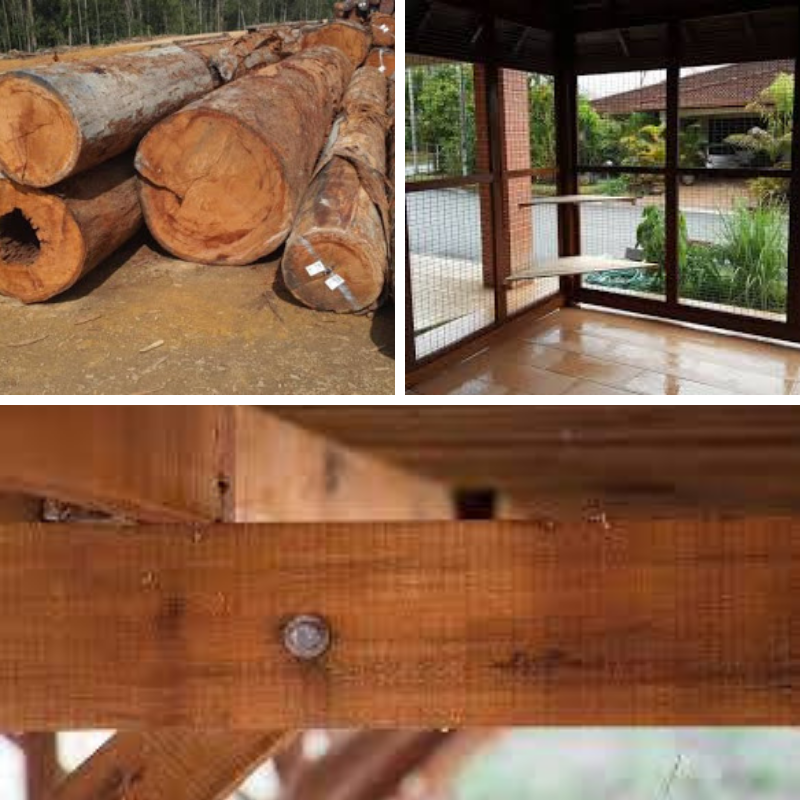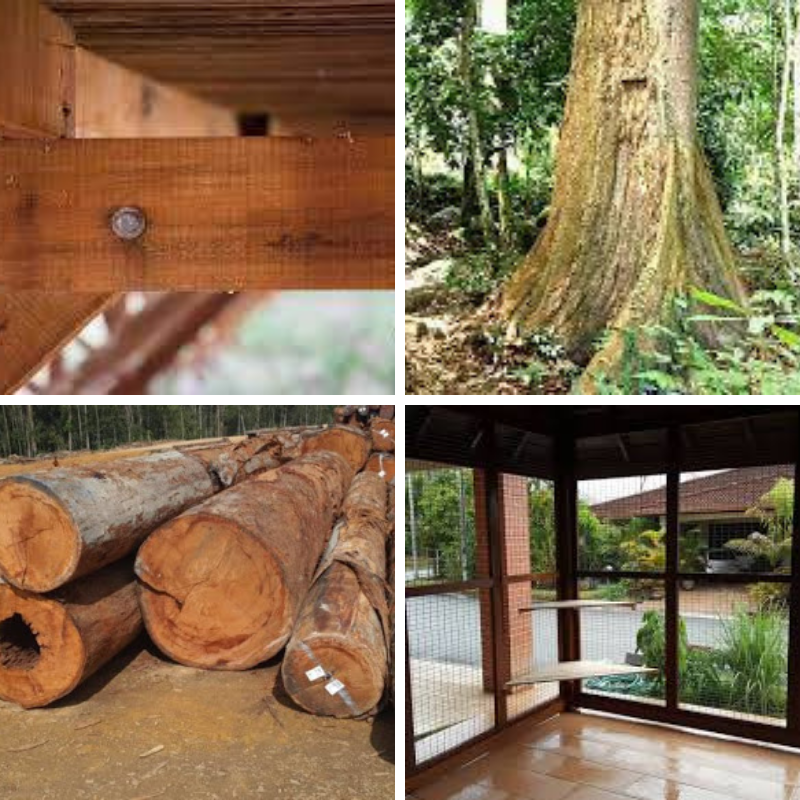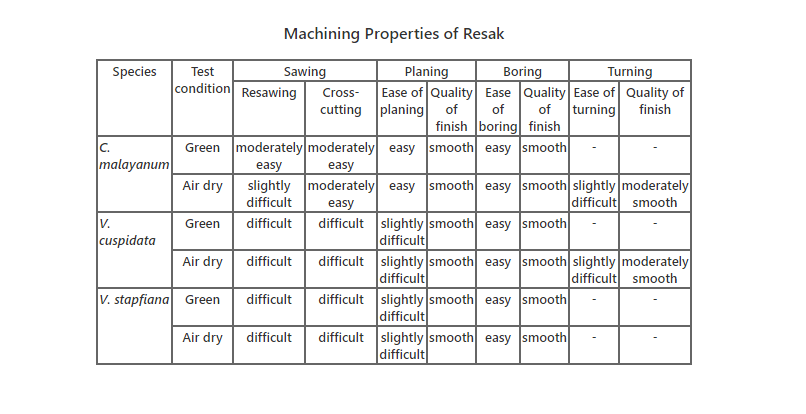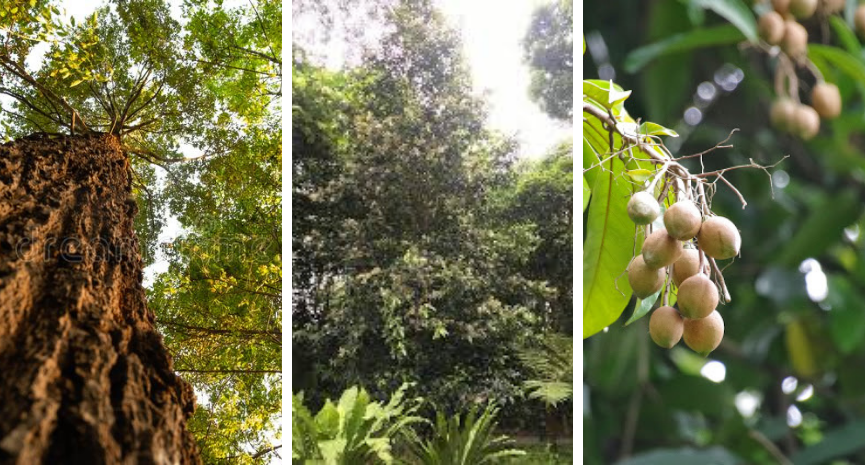[Wood Profile] What You Need To Know: Resak
Resak is a common timber wood that we export to a lot of our clients. It’s a hardwood species that is popular among many construction companies and furniture-making companies. Read on to find out what the resak timber is.
Resak Wood Overview

The standard Malaysian name for the tree and timber of Cotylelobium and Vatica (Dipterocarpaceae). Vernacular names used include resak (Peninsular Malaysia, Sabah and Sarawak) with various epithets, balau (Peninsular Malaysia) in error, damar keluang (Pahang), jenuong (Johor) and keruing babi (Peninsular Malaysia).
Its major species include
- Cotylelobium lanceolatum
- melanoxylon
- Vatica bella
- cuspidata
- flavida
- havilandii
- heteroptera
- lowii
- maingayi
- mangachapoi
- nitens
- scortechinii
Resak’s sapwood is lighter in colour than its heartwood. It is distinguishably defined in Cotylelobium but not generally so in its Vatica sub-species. The heartwood is pale yellow in the e when fresh and turns to deep red-brown when underexposure in Cotylelobium. It comes in a fine brown with a green tinge in Vatica.
Durability

There are tests on V. cuspidata, a sub-species with an average air-dry density of 1,040 kg/m3 indicated that the timber has an average service life of 14 years under natural conditions. The timber is, therefore, consider as very durable under Malaysian conditions. Other tests carried out to regulate the quality of resak timber indicated that some forms of resak are discovered as exceptionally durable (presumably the heavier varieties), ranking with the best forms of balau and giam. Furthermore, the inferior forms (presumably the lighter varieties) will appear to be at least moderately durable.
Further tests found that the sub-species timber of Cotylelobium is made of excellent quality and resistant to Teredo. It is a type of marine borer. Burgess (1966) however, says that the timber of Vatica species is not resistant to marine borers and deteriorate pretty rapidly within 12 months in Papua New Guinea. In general, resak should not be seen as resistant to marine borers. However, the material of Cotylelobium, since it contains silica, is likely to be more resistant than Vatica is.
The timber is a Heavy Hardwood type with a density of 655-1,155 kg/m3 air dry.
Preservative Treatment
Generally, preservative treatment is not entirely needed for many Malaysian Heavy Hardwoods, including the resak timber. The timber was said to be very tough to treat too. In general, the heartwood of the hard and heavy forms of resak are anticipated to be as difficult to treat as other Malaysian Heavy Hardwoods. For example, balau, chengal and bitis. It is unlikely that resak will accept preservatives of any worthwhile quantity except possibly for the sapwood of the lighter species.
Strength and Machining Properties
Below are the strength and machining properties of resak timber.


Uses of Resak Timber
The timber is appropriate for a lot of things including the following:
- All forms of heavy construction, bridges, piling, marine construction, beams, posts, joists
- Wooden pallets (permanent heavy-duty)
- Making door and window frames and sills
- Making tool handles (impact)
- Flooring (heavy traffic)
- Power transmission poles
- Laboratory benches
- Vehicle bodies (framework and floorboards)
- Railway sleepers
- Fender supports
- Staircase (angle blocks, rough brackets, carriage, riser, stringer, tread, bullnose, round end and winder)
- Cooling tower (structural members)
- Telegraphic and power transmission posts and cross arms
- Heavy-duty furniture
- Wooden containers
- And many more
Timber Defects Faced by Resak
The timber is generally unrestricted from any major defects except in some logs. Those logs may contain some heart shakes and some associated decay. Compression failure is occasionally existent in some logs. No pin or shot hole borer attack in the heartwood has been experiential but the sapwood is liable to powder-post beetle attacks. Surface-checking of the timber is common but not unembellished. Some resin pockets may also be present.
Conclusion
Resak is definitely used by many construction companies, however it is one of the less popular choices. It does not mean it is not completely overlooked by industries, just less sought-after, that’s all.

